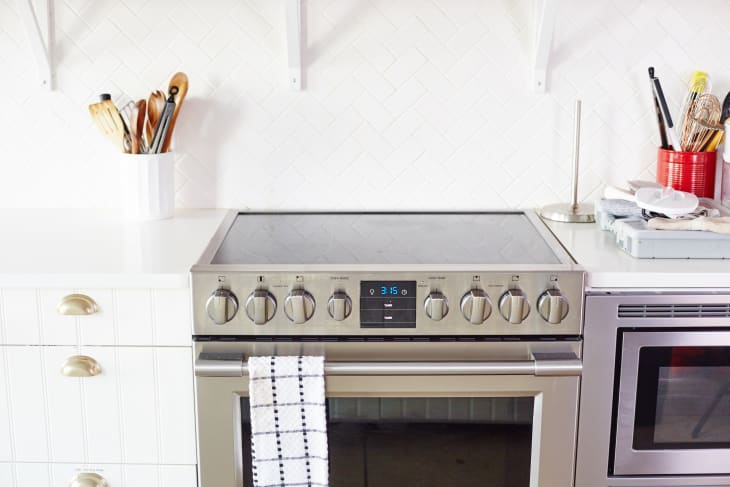How an Induction Stove Works — And the Right Pans to Use on It
Induction cooking, although not so new anymore, is one of those things that still seems to intimidate a lot of home cooks. If you’re in the market for a new range, you may shy away from one with an induction cooktop because you’re not exactly sure how it works or whether or not your current collection of pots and pans will be compatible.
The truth is, it’s not all that complicated! And if your pots and pans are magnetic, you can keep using them.
Continue reading to learn more about the magic of induction, the science of how it works, and why you may want it for your own kitchen.
The Difference Between Regular Stovetops and Induction Cooktops
Regular stovetops heat pots and pans through contact. Flames or electrical heating elements of regular stovetops generate heat, and that heat is transferred through contact from the burner to the base of the pot in a process known as thermal conduction.
Induction cooktops, on the other hand, do not generate heat. Induction burners have a coiled wire just below the ceramic surface, which generate an oscillating magnetic field.
The key to induction cooktops is that the pots and pans you use must be made from a magnetic material to work with this system. The induction cooktop will induce the electrons in a magnetic material to move around, creating an electric current. This current generates heat in the pot.
If you place your hand, or a glass pot on an induction cooktop, neither will heat up because they are not magnetic and therefore not affected by the alternating magnetic field of the induction burner.
The Types of Pots That Work with Induction
Magnetic materials that work well with induction cooktops are cast iron, steel, and magnetic stainless steel (the stainless steel must contain some iron). Ceramic-clad and enameled pots and pans, like Le Creuset cookware, work with induction stovetops because hidden within the ceramic layer is an iron pan, which is magnetic.
Shop for Induction-Friendly Cookware
- Le Creuset 5.5-Quart Dutch Oven, $330
- Lodge 12-Inch Skillet, $33
- All-Clad Nonstick Induction Fry Pan, $80 for set of 2 at Williams Sonoma
The Types of Pots That Don’t Work with Induction
Aluminum, glass, and copper pans don’t work with induction stoves, unless they are made with a layer of a magnetic material on the bottom.
How to Tell If Your Pots Will Work with Induction
If you aren’t sure if your pans are magnetic or not, or what material your pans are made of, here’s an easy trick: Grab a magnet from your fridge and hold that magnet near the bottom surface of the pan. If you let go of the magnet and it sticks to the base of the pan, the pot is magnetic, and therefore will work with an induction stovetop.
Why Switch to Induction?
The great thing about induction burners is that they are efficient: only the pot on the stove heats up. Plus the burner itself doesn’t warm up much, except from contact with the hot pan, so it’s safer for you and any kids who may be running around. You’re also less likely to accidentally melt a plastic grocery bag placed on a recently used induction burner (which is something I do frequently with regular ceramic cooktops when I’m not thinking).
3 Induction Appliances We Love
- Frigidaire Gallery 30-Inch Induction Cooktop, $998 at Home Depot
- Hamilton Beach Portable Induction Cooktop, $59
-
Samsung 5.8-Cubic Foot Slide-in Induction Range, $1,999 at Lowe’s
